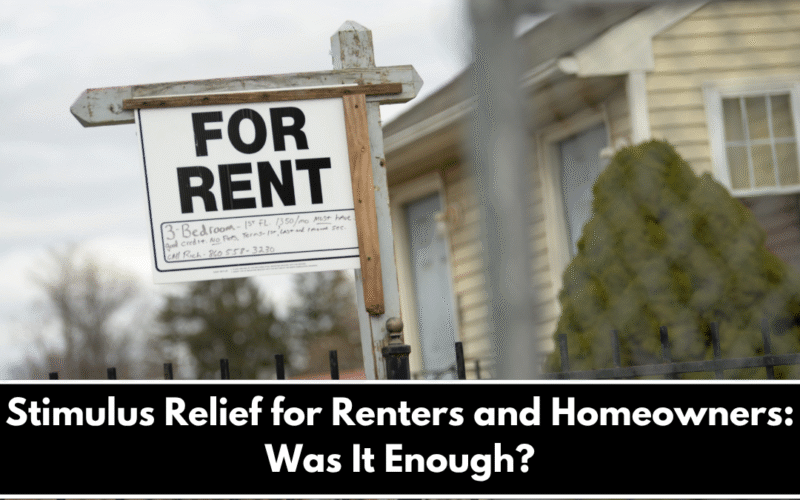During the COVID-19 pandemic, millions of Americans faced job losses, reduced income, and uncertainty. To help people stay in their homes, the U.S. government introduced stimulus packages that included rent relief and mortgage assistance. These efforts aimed to protect renters from eviction and homeowners from foreclosure. But even with billions spent, many still struggled. So, was this relief enough?
Emergency Relief Programs – What Was Offered?
The federal government, through several relief packages like the CARES Act and the American Rescue Plan, provided funding to help renters and homeowners. Here’s what was included:
- Rental Assistance: Billions of dollars were distributed to state and local governments to help renters pay overdue rent, utilities, and future payments.
- Eviction Moratoriums: The CDC and federal government temporarily banned evictions during the peak of the pandemic.
- Mortgage Forbearance: Homeowners with federally backed loans were allowed to delay mortgage payments without facing foreclosure.
- Stimulus Checks: Direct payments to Americans helped many cover rent, mortgage, or other living expenses.
These actions helped slow down evictions and foreclosures, giving people time to recover financially. But problems remained in how the relief was distributed.
Challenges Faced by Renters and Homeowners
While the relief sounded promising, several issues made it hard for many to get the help they needed.
- Slow Application Processes: Some renters waited months for help due to complicated paperwork or delays from local agencies.
- Uneven Distribution: Some states and counties distributed funds efficiently, while others struggled or ran out of money.
- Landlord Cooperation: In some cases, landlords refused to participate in the rental assistance programs, making it difficult for tenants to apply.
- Limited Awareness: Many people didn’t even know that rental or mortgage help was available, especially in low-income or rural communities.
- End of Moratoriums: Once eviction protections ended, many families were left without support, facing eviction or foreclosure.
These gaps meant that while millions were helped, many still fell through the cracks.
The stimulus relief for renters and homeowners during the pandemic was a lifeline for many. It prevented a housing crisis from becoming worse. But it wasn’t perfect. While the government took fast action, the system struggled with delays, confusion, and uneven support. For future crises, a simpler and more efficient system may be needed to ensure every struggling family gets the help they deserve in time.
FAQ’s:
Q1. What kind of rental assistance did the government provide during COVID-19?
The government gave billions in emergency rental assistance to help people pay back rent, future rent, utilities, and avoid eviction.
Q2. How did homeowners benefit from the stimulus relief?
Homeowners with government-backed mortgages could pause their payments through mortgage forbearance, and some also got help with property taxes or utility bills.
Q3. Why did some renters not receive the relief funds?
Many renters faced issues like complex applications, landlord refusal, lack of awareness, or delays in local programs, which prevented them from getting help.
Q4. Are any housing assistance programs still available now?
While major pandemic-era programs have ended, some states and local governments still offer housing support for those facing financial hardship.
Q5. What lessons were learned from the pandemic housing relief programs?
The key lessons include the need for faster, simpler application systems, better communication, and ensuring landlords and tenants work together for successful relief.
